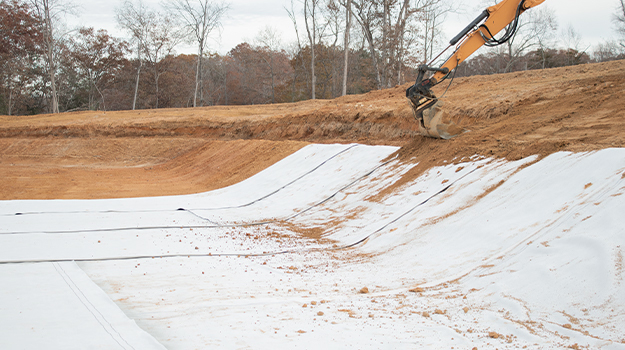
A critical component of a well-conceived waste management plan, landfills are highly engineered facilities. In particular, the design and management of municipal solid waste (MSW) landfills carry environmental significance. The site, design, construction and operation of landfills require stringent compliance with government and environmental guidelines. Each landfill engineering project is unique and comes with many design and operational considerations. Erosion, sedimentation, stormwater management and leachate management are some common considerations. Geosynthetics, particularly geosynthetic clay liners (GCLs), find immense utility in landfill construction.
In India, the massive industrialization, urbanization, infrastructure and population expansion are generating an enormous amount of waste. Improper waste management takes a toll on the environment and can wreak havoc on the general health of citizens. GCLs provide a robust solution to all the problems and challenges of MSW landfills. GCLs in landfill engineering is gaining increasing acceptance as the most appropriate barrier in solid waste management.
The primary aim of a landfill is to ensure zero contamination of the environment from chemical, solid or liquid wastes. It must prevent the percolation of harmful liquid into groundwater and avoid the escape of toxic gaseous emissions into the atmosphere. Landfills are therefore well-engineered and well-managed structures that help dispose of solid wastes in compliance with regulations.
Functioning as a hydraulic barrier, GCLs in landfill engineering are known for their properties of filtration, separation, reinforcement, drainage and stabilization. GCLs are a high-performance and cost-effective geocomposite alternative to traditional compacted clay liners. A GCL comprises two layers of geotextiles enclosing a layer of sodium bentonite (natural sealant). The layer of bentonite swells when water contacts it.
Long-lasting resistance to chemical breakdown, physically robust to withstand harsh environments, and super-efficient as containment systems, GCLs are an excellent solution for landfills. The lower the permeability and conductivity, the higher the efficiency of GCLs, minimizing seepage. Self-sealing properties reduce the risk of puncture, and the GCLs also have excellent shear resistance. Additionally, the ease of installation and cost-effective nature of GCLs make them a natural choice for landfill engineers.
Within the context of landfill engineering, here are some of the typical GCL applications:
- Base liners in landfills
- Surface liners
- Gaseous seals or caps
- Secondary containment
- Tailings containment
- Waterproofing
- Groundwater protection
- Vertical barriers
GCLs are robust and versatile products that meet the required safety standards for landfills. GCLs not just reduce construction time and cost but are also highly environmentally friendly.
This article originally appeared on the Ocean Global News & Insights page, www.oceangeosynthetics.com/news-updates.
 TEXTILES.ORG
TEXTILES.ORG


